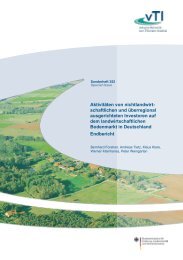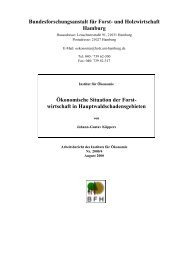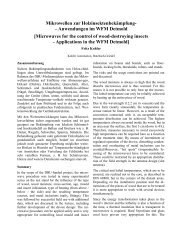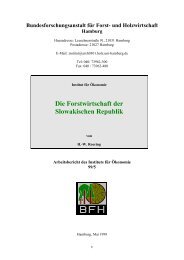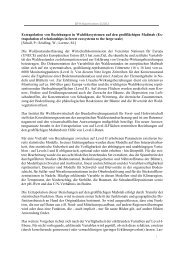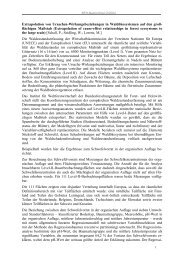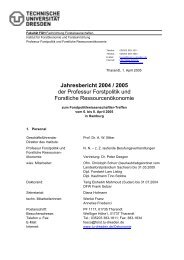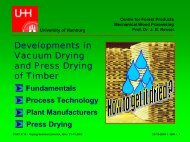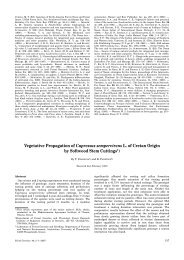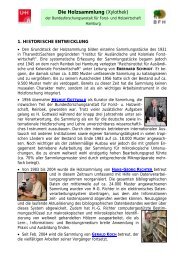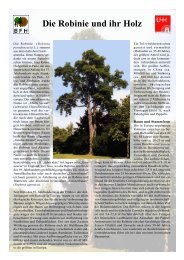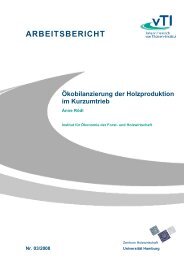STATE OF THE ART REVIEWS
STATE OF THE ART REVIEWS
STATE OF THE ART REVIEWS
You also want an ePaper? Increase the reach of your titles
YUMPU automatically turns print PDFs into web optimized ePapers that Google loves.
COST ACTION E22: Environmental optimisation of wood protection<br />
The main government bodies involved with the subject of wood preservatives,<br />
today, are the Ministry of Agriculture, the Greek Organisation for Standardisation<br />
(ELOT) and the Ministry of Health. However, the subject is still handled as a technical<br />
problem (import and use of toxic chemicals). Many efforts from interested private<br />
bodies and Institutions, on the merits of the technological improvement of the<br />
service life of wooden constructions through industrial treatment, have failed to<br />
change this view. As a result, while most of the European countries have established<br />
and apply their own national standards which define in detail processes, preservatives,<br />
effectiveness and restrictions, in Greece up to the present, no such national<br />
standards exist.<br />
1.2 Performance of wood preservatives<br />
The formulations used in Greece for pressure impregnation of timbers, are those of<br />
the creosote type and the waterborne inorganic salts of copper, chrome and arsenic<br />
(CCA) and copper, chrome and boron (CCB). Those chemicals are classified as<br />
agrochemicals and as such their registration and final approval for marketing and<br />
use lies with the Ministry of Agriculture. There are not any installations for the<br />
impregnation of wood with the organic solvent type of wood preservatives.<br />
Special preservative formulations and application methods are in use for remedial<br />
treatment of power transmission poles in situ. Those formulations are applied either<br />
externally, in the form of paste, or in pockets inside the mass of the pole, in the form<br />
of water-soluble salts. The paste is a thixotropic mass of sodium fluoride, potassium<br />
dichromate, creosote and dinitrophenol (under the commercial name “Osmoplastic”<br />
by Osmose). The area of the pole subjected to this remedial treatment comprises of a<br />
zone extended from 10 cm above to 45 cm below ground line and repeated at 10<br />
years intervals. The life of a pole is extended from an average of 27 years to about<br />
60 to 80 years.<br />
Wood protecting varnishes applied with brushing or dipping and used for surface<br />
treatment of timber, containing permethrins are allowed after an appropriate standard<br />
approval procedure. However, someone can find in the market an enormous<br />
number of varnishes, with wood preserving agents, which do not indicate clearly<br />
their composition and some of them may contain substances really dangerous to<br />
man.<br />
The existing today impregnation units include four creosote plants and twelve small<br />
- scale units using water soluble inorganic salts of the CCA and CCB type. The<br />
impregnation of wood is carried out in closed vessels (cylinders) using standard<br />
pressure treatment methods. Creosote impregnation units treat about 70,000 m3 of<br />
timber per year (mainly electricity and telecommunication poles and railway sleepers)<br />
which will be used almost exclusively in ground contact. The other twelve units<br />
treat, in total, about 15.000-20.000 m3 of timber per year with water borne pre-<br />
85



